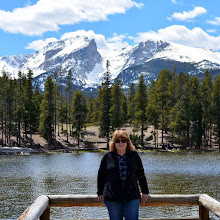In my last blog post--click here-- I showed part one of the Mines Museum of Earth Science located at the Colorado School of Mines On the upper floor of the museum is a vast collection of rocks and minerals and other fascinating Earth Science related materials. On the lower level, located inside a large safe display is one of two Goodwill Moon Rocks collected during the Apollo Moon Mission. (All the photos in this blog post will enlarge for easier viewing if clicked on)
The full moon rock display of the largest moon rock.
More information from the display.
Another display had this small portion of a moon rock from the Taurus Littrow Valley, along with a small flag of the State of Colorado that accompanied the astronauts to the moon!
The full display of this moon rock
Further info about the rock from the display.
Inside another safe is the Miss Colorado Crown containing over 600 gemstones and 21 diamonds.
Please click on the photo to enlarge it
The tiara was worn by Miss Colorado for the first time in July 1973.
More info about the crown from its display.
Most of the museum's collections of gemstones and minerals are on display on the upper level, but there was this interesting map of the USA with the most common minerals found in each state.
There were also collections in the lower level from all around the world. This display showed minerals from Europe
Minerals from Africa
Minerals from India, Pakistan, Afghanistan, Australia, and Asia
There are also some displays of fossils in the museum. An Ursus Spilaeus or Cave Bear skull from Romania is in the photo above.
A Mastodon tusk from Alaska, and two Mastodon teeth.
Various other fossils
A 67-pound Canyon Diablo Meteorite was found in a crater in Coconino County, Arizona.
One could spend hours reading all the displays showing mining tools, the ways minerals are incorporated into objects that are in use today, and many other aspects of earth science. Visiting the Mines Museum of Earth Science is certainly a wonderful way to learn more about the scientific richness of our earth.
It was the culmination of a perfect day out together!
Wishing all who celebrate this week a very Happy Thanksgiving! I'll be taking next week off from blogging as it will be a very busy time for me. I'll be back in December, See you then!












































































